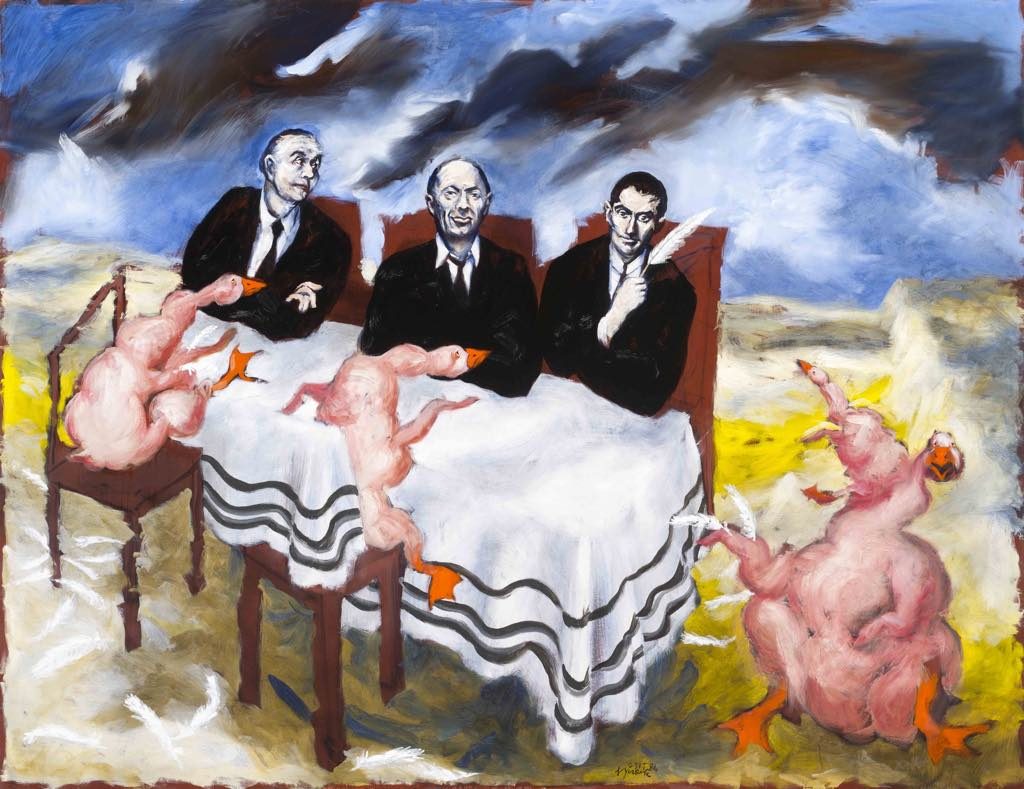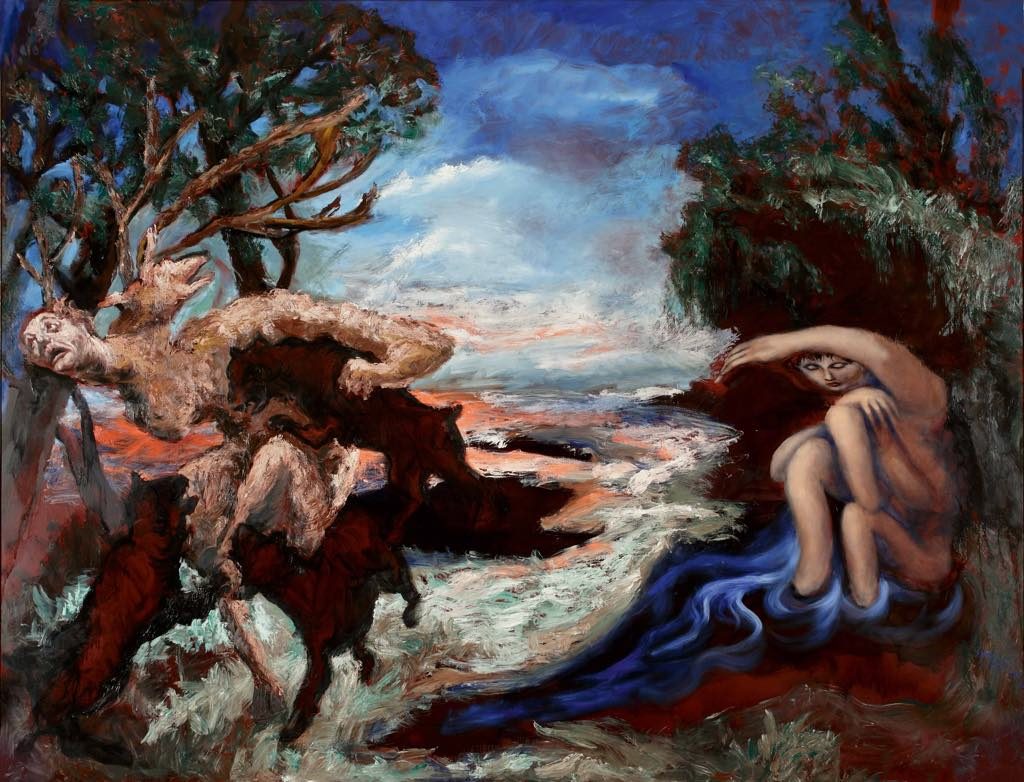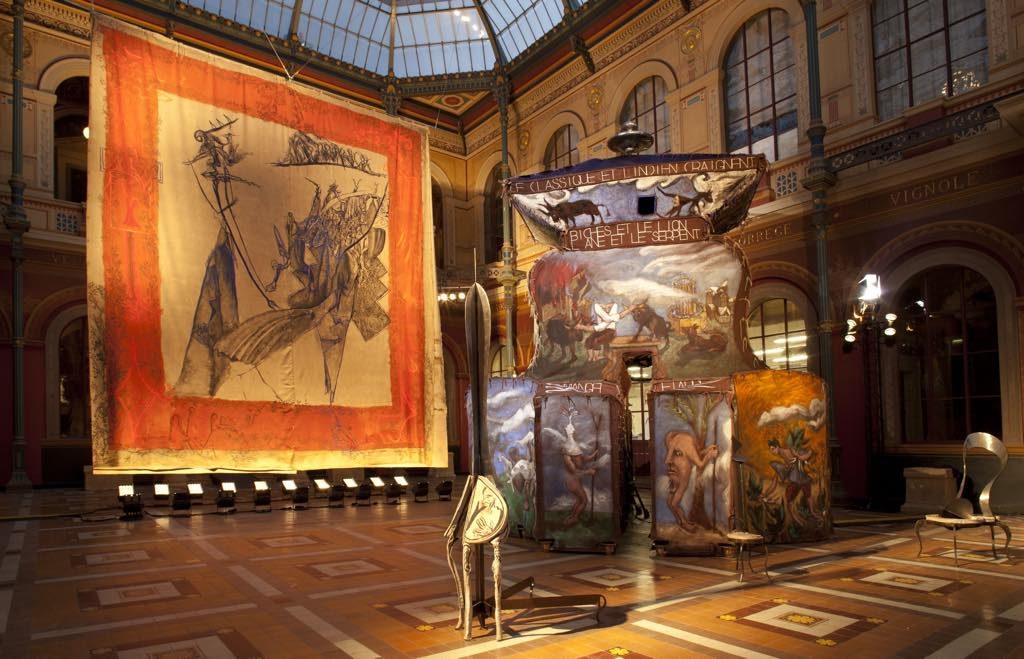
Visiting the three exhibitions of the work of Gérard Garouste currently on show in Paris is like taking a tour of the artist’s unconscious as expressed through philosophical, literary, mythological and religious themes. Collectively called “Zeugma,” the shows are being held at the Musée de la Chasse et de la Nature (through July 1), the Galerie Daniel Templon (through May 12) and the École des Beaux-Arts (through April 15).
Garouste (b. 1946) is an original, known for his intensely colored, often monumental paintings on biblical or mythological themes. Full of humans, animals and bizarre hybrid creatures with twisted forms, the paintings of this artist with a deep philosophical and mystical bent seem bizarre and mysterious at first glance but always conceal a story.
“Zeugma” in the original Greek means “joining” or “bridging.” At the Galerie Templon, Garouste uses the image of the bridge to connect stories from the Talmudic and other traditions to his own life.
In “The Three Masters and the Fatted Geese” (2017; pictured at the top of this page), for example, which grew out of a discussion about whether foie gras could be considered kosher, is based on the Talmudic story of geese so fat that they lost their feathers and took up the issue with three passing rabbis. In the painting, the faces of the rabbis are those of the writers Jorge Luis Borges and Franz Kafka, and the itinerant Jewish philosopher and teacher known as Monsieur Chouchani.
At the Musée de la Chasse, the theme is the myth of Diana and Actaeon. As told by Ovid in The Metamorphoses, the story is about the hunter Actaeon, who accidentally comes upon Diana, goddess of the hunt, bathing in the forest. To punish him for laying eyes on her nakedness, she turns him into a stag, and in that form he is hunted down and killed by his dogs.

Garouste’s paintings, however, offer his own interpretation of the myth. In his version, Diana couldn’t care less about a mere mortal seeing her naked. What really angers her is that he dares to look at her with desire. He releases his lust on his dogs, and the dogs get their revenge by tearing him apart. This violent story plays out in the paintings and drawings, with the faces of Actaeon and Diana respectively resembling Garouste himself and his wife, the well-known designer Élisabeth Garouste.

The École des Beaux-Arts is showing a group of monumental works on various themes: Indians, Bacbuc (the “holy bottle” in Hebrew) and ellipses. Some of these pieces are fantastical structures built of paintings. One is like a house and can be entered by visitors, while the paintings inside another can only be seen by peering through the metal tubes that pierce it. These older works from different periods are full of strange creatures like the grotesque humans whose faces and genitals have migrated to their backs.
In the “Zeugma” works, Garouste seems to have found a way to build his own bridge between the intellect and the unconscious. He is a fascinating man who seemed quite jolly and at ease with himself when he spoke at the press preview at the Musée de la Chasse, but in the past he has written frankly about his psychiatric problems and his guilt about his father’s anti-Semitism. If this is art as expiation, it seems to have worked, but he is not letting anyone off the hook. As he has said, “I want to be the worm in the fruit.”
Favorite
An interesting museum but few visitors. I have been there a number of times for the musical events in the courtyard (mostly small groups, a singer with a couple of backup musicians) but skipped the museum itself after one brief look inside.
That’s a great museum, fascinating historic taxidermy and other artifacts. Worth seeing with or without the art.